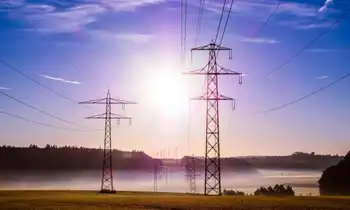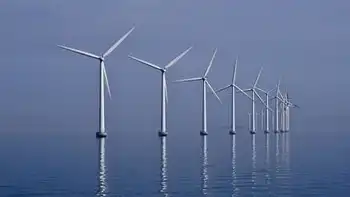Utilities warming to ice-storage AC systems
By Toronto Star
High Voltage Maintenance Training Online
Our customized live online or in‑person group training can be delivered to your staff at your location.

- Live Online
- 12 hours Instructor-led
- Group Training Available
A white roof keeps it cooler in the summer. Rooftop windows let in natural sunlight and sensors turn on what lights there are only when needed. Special parking is reserved for customers who drive hybrid-electric and other super-efficient vehicles. Rain is collected from its rooftop and used as grey water for toilets and outside watering.
Atop the roof sit two massive solar arrays consisting of dozens of parabolic mirrors that concentrate the sunlight to generate both electricity and heat for hot-water production. Each array is attached to a motorized tracker, which follows the sun throughout the day to maximize the amount of energy collected.
All said, the building's design makes it 68-per-cent more energy efficient than comparable retail properties, an achievement that has earned it Leadership in Energy and Environmental Design (LEED) certification, with a gold rating.
But there's more. To achieve such high energy-efficiency, the building also cools itself using massive blocks of ice instead of energy-hungry air conditioners. At the back of the building sit four Ice Bear systems, looking like oversized refrigerators knocked on their sides, developed by Santa Clara, Calif.-based Ice Energy Inc.
The concept behind the Ice Bear is quite simple: at night, when electricity is plentiful, a condensing unit pumps refrigerant through copper coils equally distributed through the body of the water-filled unit, which is heavily insulated. The coils freeze the 1,800 litres of water in the unit and then automatically shut off.
During the day, when power demands peak and electricity is more expensive, the system is reversed and the ice is used to cool air that is circulated through a building's ventilation system. The biggest energy draw that's really used at this point is 300 watts to run a ventilation fan. That's the equivalent of having three incandescent light bulbs on.
Each Ice Bear system, when water is completely frozen, can supply the same amount of cooling as a conventional five-tonne rooftop air conditioning system for about six hours – that is, until all the ice melts. It then takes a good 10 or 11 hours to refreeze the water in preparation for the next day.
Now, like most emerging clean technologies, the clear environmental benefits don't necessarily translate into economic benefits. James Alden, the chief operating officer of Toronto-based Summerhill Group, an environmental consultancy that's helping the Ice Bear concept gain traction in Canada, will be the first to tell you that the system is at least double the cost of traditional rooftop air conditioners.
"You're not going to sell this to a customer strictly on a payback perspective, with the exception of companies aiming for LEED certification," like Mountain Equipment Co-Op, he said.
On the other hand, Alden said the system makes sense for utilities looking to eliminate daytime spikes in electricity demand by shifting consumption to periods of low demand – that is, overnight. This can make economic sense on a system-wide scale because it delays the need to build so-called "peaker" power plants and can ease congestion on the grid, possibly deferring costly transmission and distribution upgrades.
He envisions a major utility or group of utilities strategically deploying enough Ice Bear systems to retailers and other commercial buildings throughout the province to shift 30 megawatts of peak-time demand to low-peak periods. The units would be owned by the utilities and could be remotely controlled through a smart grid.
Hydro One, Powerstream, Toronto Hydro, and a number of other utilities have already visited Mountain Equipment Co-Op to learn about the system. "All the large utilities are interested," Alden said, pointing out that under the new Green Energy Act local electric utilities can now do these kinds of projects more freely.
Now, they just have to get creative.
You may remember an Ontario-born company called Tamarack Lake Electric Boat Co., which has developed a solar-hybrid pontoon boat. The company is in the process of moving to New York State and has rebranded itself Buffalo Solar Boats. Seems incentives south of the border were better than those offered – or not offered – here.
But don't fret, as another local has come out with an all-electric solar boat, this one called the Humber Foton. Made by Toronto-based Humber Boat Ltd. (www.humberboats.ca), the Foton is more like a slow-moving fishing boat. A six horsepower electric motor with custom solar panels on the front costs $8,895. The two horsepower model is $7,895.
Don't expect a speedboat. The top model only goes up to 10 km/h for about 1.5 hours before needing a recharge. But if you're on a quiet lake and aren't in a hurry, it may fit the bill.











